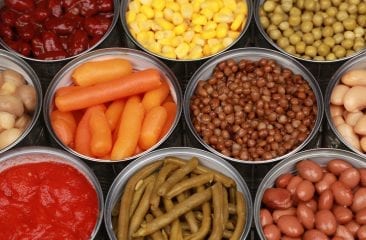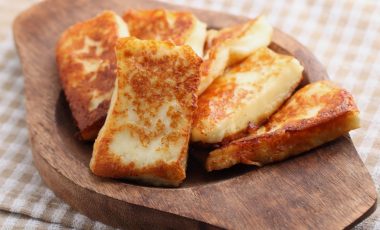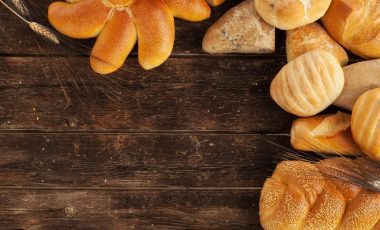“The dose makes the poison.” Why does sugar have such a bad reputation? And how can you successfully reduce your daily consumption of sugar?

Whether it’s as a reward, as a comfort or simply as a little snack between meals: Sweet treats quickly put a smile our faces. The variety of cookies, cakes, chocolate, wine gums, liquorice and sweet dairy products and desserts is enormous. However, industrial isolated sugar not only resides in these tempting sweets but also in numerous processed foods. At the same time, the market for sugar alternatives is also booming. Find out here if it makes sense to cut down on sugar and which tips and alternative products you can use to make this happen.
The term “sugar” usually refers to table sugar. The crystalline substance is a disaccharide made from glucose and fructose. The combination of these two monosaccharides is called sucrose. Table sugar is nothing more than pure sucrose. It is produced from sugar cane or locally-grown sugar beets.
Not all sugar is the same
Various types of table sugar line the supermarket shelves and they are manufactured using different production methods. Whether white or brown, powdered or coarse, made from sugar cane or sugar beets: The body doesn’t differentiate between the type you choose. The rumour that, for example, raw cane sugar or whole sugar are healthier because of their mineral content is untrue. The amount of minerals they contain is far too low to make a contribution to the supply of nutrients the body needs. In contrast, taste differences between certain types of sugar such as caramel nuances can be detected. Rock candy and whole sugar are candidates for those who love the taste of caramel.
Sugar not only refers to table sugar. You already know that table sugars consist of the monosaccharides glucose and fructose. These kinds of sugar are also present in all types of fruit, as well as individually in the form of sucrose. In addition to sucrose, there are also the disaccharides lactose and maltose. Lactose, also known as milk sugar, is present in milk and dairy products and includes galactose as well as glucose. Maltose, or malt sugar, is industrially extracted from barley and consists of two glucose molecules. It is not as sweet as table sugar.
The dose makes the poison
When we talk about reducing our sugar consumption, we particularly mean decreasing the use and consumption of table sugar. Of course, fruit is also not healthy when consumed in too high of amounts. The difference is however, that fruit contains important dietary fibre and beneficial nutrients alongside sugar. And fruit is more satiating than sweets, making it difficult to eat too much of it. Table sugar also hides in many savoury processed foods and we often consume it without being aware of this. It also performs the task of extending the shelf life of these products.
Sugar is not unhealthy, per se. However, regularly eating too much of it can become problematic. Sugar supplies us with a lot of energy! One gram of the alluring substance contains four calories. As a consequence, sugar plays a role in people becoming overweight and obese. That’s because those who supply their body with more energy than they burn up will usually put on weight as a result. Being overweight is a key risk factor for diseases such as type 2 diabetes or cardiovascular diseases. What’s more, sugar can lead to caries. Thus, when frequently consumed, it has a detrimental effect on dental health.
Wherever you go, sugar and products containing sugar are available everywhere. There isn’t a supermarket in the country which doesn’t have a large confectionery aisle. Bakeries are also located on every corner, selling their cakes, cookies and pastries. At the same time, our predilection for sweet things is in our genes. That’s because sweet plants are generally not poisonous and sweetness is an indicator of ripeness. Our ancestors were also dependent on being able to detect good sources of energy. This all makes it quite a challenge to resist sweet temptations.
Reducing sugar consumption made easy
Recommendations for the maximum daily consumption of sugar are in the area of about ten per cent of the total number of calories. For adults, this is on average approximately 200 calories, which in turn is 50 g of sugar. Enjoying sugar in moderation is therefore possible without having a guilty conscience. Moderation is best achieved when you create fully conscious moments of indulgence. It helps to portion out snacks. Place a row of chocolate on a plate, then immediately pack away the rest of the bar. Then you can fully enjoy the chocolate without having the option of simply eating up the rest of the bar. A stop sign on the kitchen or fridge door can also encourage you to pause for a moment and reflect on the reason behind the craving for something sweet before reaching for a sugary temptation.
Ask yourself: “What would be better for me instead?” Perhaps you could relax with a warming cup of tea, go for a walk, practise yoga or do some work in the garden. Afterwards, the longing for something sweet has usually faded away. What’s also good to know: In the same way that you can get used to a very sweet taste, you can also get used to a reduced intensity of sweetness too. To do this, gradually reduce the amount of sugar you put in your tea, or try to use increasingly less sugar each time you do some baking. After a while, you will notice that some foods taste far too sweet. The best protection against eating too much sugar and the best choice for a balanced diet are fresh foods which are as unprocessed as possible. Don’t snack because you are hungry, instead prepare delicious and varied meals. Rather than eating a sweetened fruit yoghurt for dessert, opt for a natural yoghurt with fresh fruit. And first thing in the morning, a fresh batch of porridge or home-made muesli made from a variety of cereals, nuts and fresh fruit ensures a much better start to the day than sugary chocolate muesli from the supermarket. You can also proceed in stages here too: Use up the rest of your ready-made muesli as a topping before you stop buying it altogether. You can also add more flavour to your home-made meals by adding cinnamon, vanilla or aniseed instead of sugar.
The best protection against eating too much sugar and the best choice for a balanced diet are fresh foods which are as unprocessed as possible. Don’t snack because you are hungry, instead prepare delicious and varied meals. Rather than eating a sweetened fruit yoghurt for dessert, opt for a natural yoghurt with fresh fruit. And first thing in the morning, a fresh batch of porridge or home-made muesli made from a variety of cereals, nuts and fresh fruit ensures a much better start to the day than sugary chocolate muesli from the supermarket. You can also proceed in stages here too: Use up the rest of your ready-made muesli as a topping before you stop buying it altogether. You can also add more flavour to your home-made meals by adding cinnamon, vanilla or aniseed instead of sugar.
Pay attention when you’re shopping: When buying ready-made products, it’s worth reading the list of ingredients carefully. You can quickly uncover a lot of sugar this way. The sugar content is listed in the table of nutritional information. However, this indicates the total amount of sugar that naturally occurs in the product, combined with the amount of added sugar. And don’t be deceived if you initially don’t spot sugar in the list of ingredients: Added sugar can hide behind more than 50 different names. Inverted sugar, glucose sugar and maltodextrin are just a few of these. It’s useful to know that frozen foods are generally less sugary than their counterparts in cans and glass jars.
And frequently underestimated: sweet drinks. It’s not just soft drinks which are often real sugar bombs. Supposedly healthy fruit juice spritzers can also catapult your daily sugar consumption up to lofty heights. It’s best to get used to quenching your thirst with calorie-free drinks like water or unsweetened tea. Fresh mint or a few drops of lemon juice add some natural flavour. If you do want to enjoy a sweet, fruity drink on occasion, it’s best to make your own fruit juice spritzer. Water and juice in a ratio of 3:1 is then the ideal thirst quencher.

Pros and cons of sugar alternatives
First things first: In general, the best way of reducing your sugar consumption is to get used to a less sweet taste. But what about the numerous alternatives to sugar? Do they really present a healthy alternative to table sugar? Maple syrup, honey, coconut blossom sugar, red banana powder, stevia, aspartame, xylitol or erythritol: The products can differ greatly from one another and have specific benefits and drawbacks.
Maple syrup, honey, coconut blossom sugar and red banana powder are sweetening foods. Coconut blossom sugar is extracted from the nectar of the coconut palm tree, red banana powder from puréed and dried red bananas. The high-priced sugar alternatives mostly consist of sucrose and, like table sugar, have a large number of calories. What’s more, they have no scientifically-proven effect on reducing the rise in blood sugar levels after being consumed nor do they make a beneficial contribution to supplying the body with nutrients. Honey and maple syrup also consist of the sugar components glucose and fructose. Their mineral content is therefore also insignificant. Ultimately it is a question of taste as to whether you prefer using these alternatives.
Other sweet alternatives include sugar alcohols, such as erythritol and xylitol. With the exception of the calorie-free erythritol, the calorie content of these alternatives, at about 2.4 calories per gramme, is less than that of sugar. Plus they don’t cause cavities like sugar does. You can also use them in similar amounts to sugar. However, erythritol is less sweet than sugar: If too much is consumed, most sugar alcohols can cause bloating or diarrhoea.
A totally different category is artificially produced sweeteners. Almost all of these are completely calorie-free and are also beneficial for the health of our teeth. Yet with a sweetness that is 30 to 3000 times stronger than sugar, it’s clear that they cannot replace the volume of sugar. What’s more, their sweet taste is not as rounded and thus less satisfying. That’s why products containing sweeteners frequently include a mixture of different kinds of sweeteners. Due to the chemical manufacturing or chemical processing of natural stevia leaves, this sweetener is often viewed with scepticism. However, no carcinogenic or other harmful effects on health have been found so far, and regular inspections are conducted to detect any possible risks as early as possible.

#liebherr, #reducingsugar, #sugar, #tablesugar, #sucrose, #fructose, #glucose, #overweight, #obese, #diabetes, #sugaralternatives, #dextrose, #fruitsugar, #milksugar, #maltsugar, #lactose, #maltose, #honey, #maplesyrup, #coconutblossomsugar, #redbananapowder, #erythritol, #xylitol, #stevia, #cavity, #teethhealth, #stevia, #sweetener, #sugaralcohols





